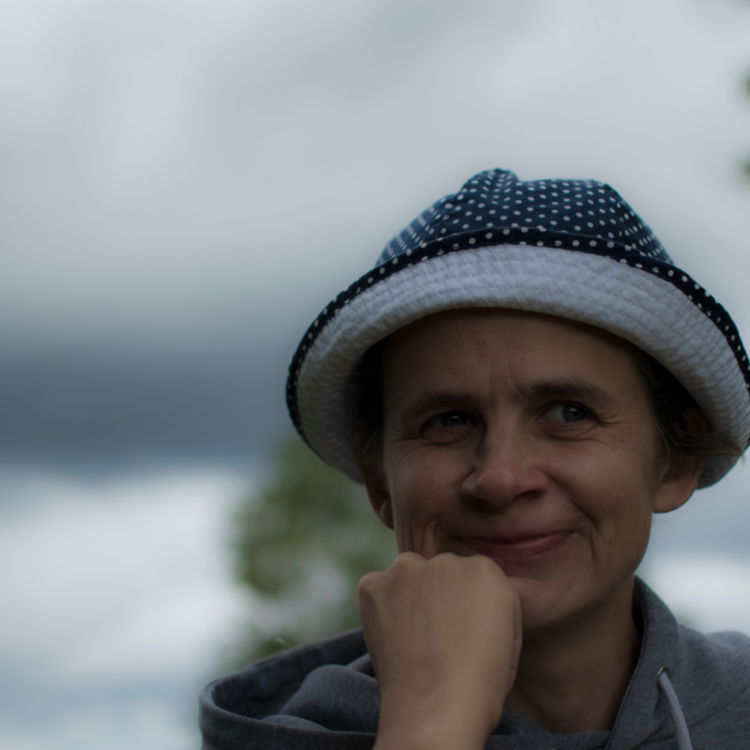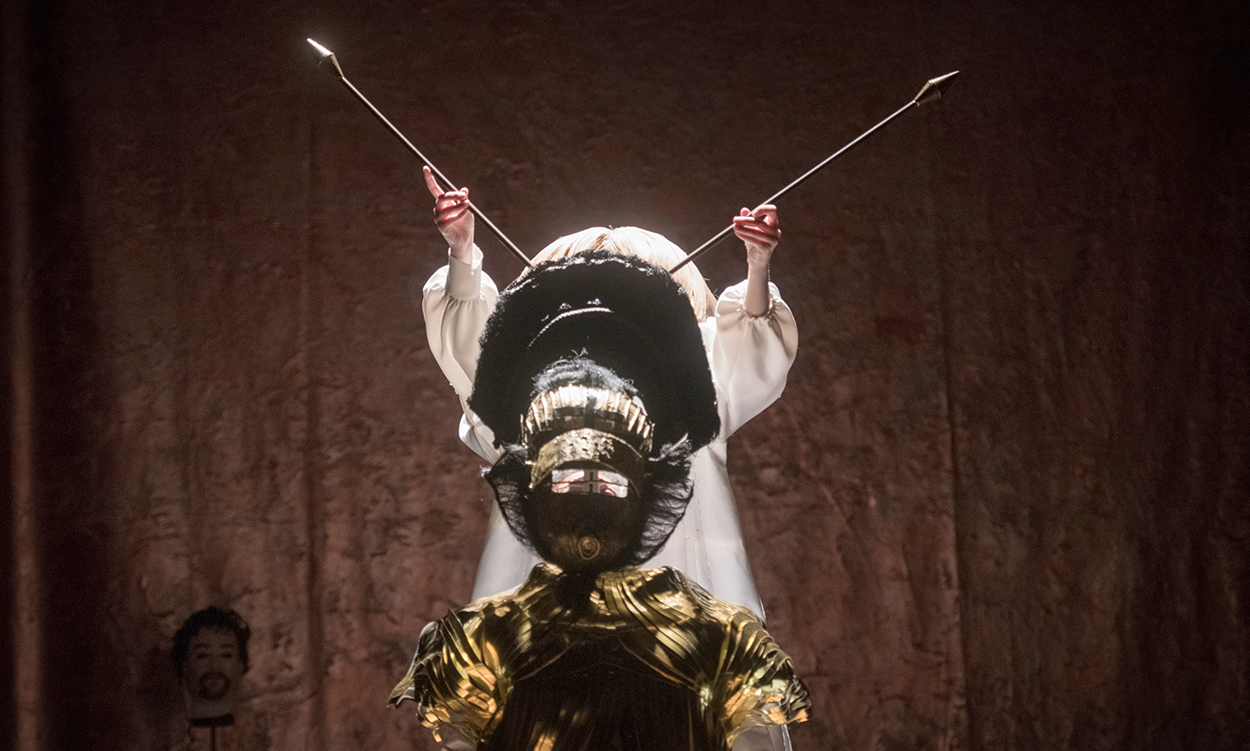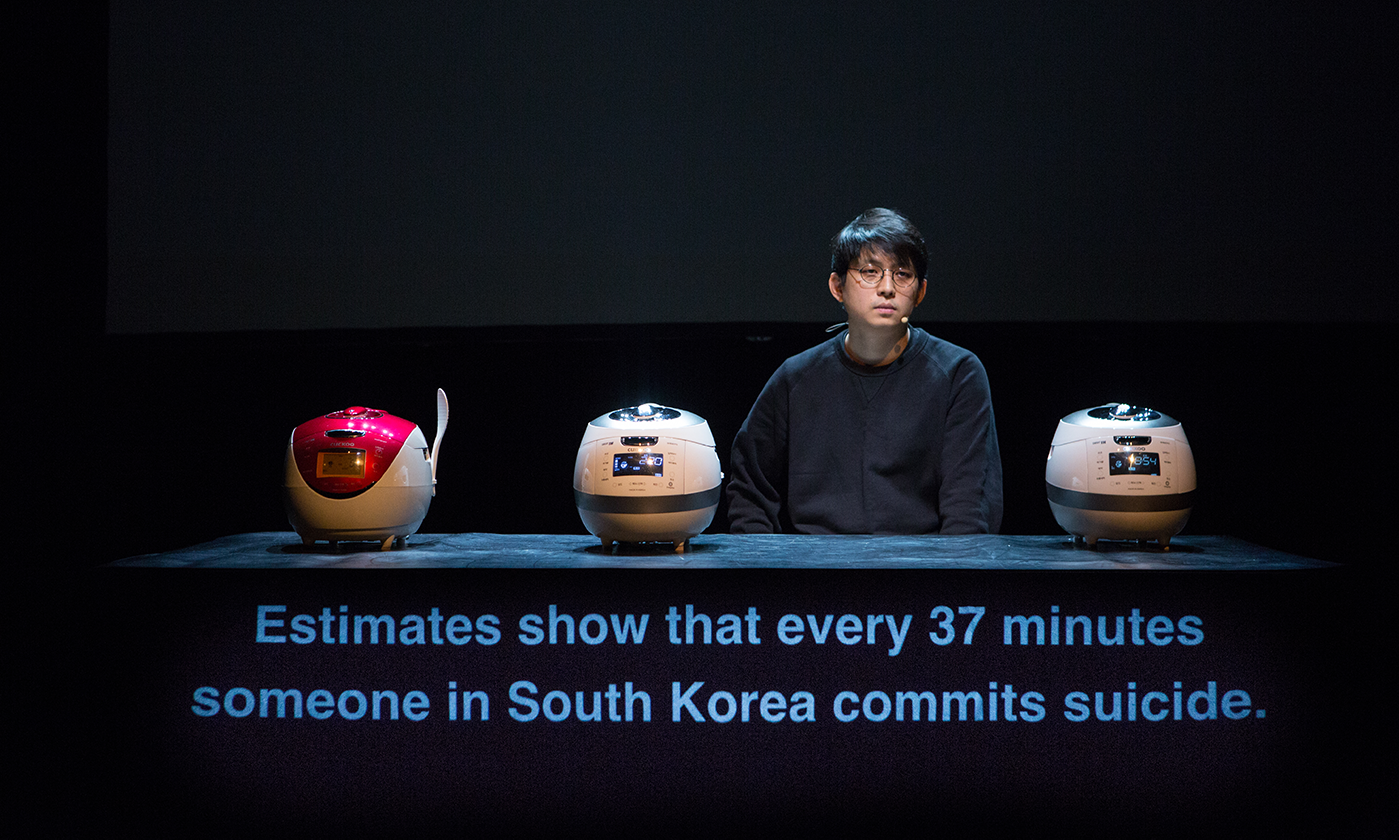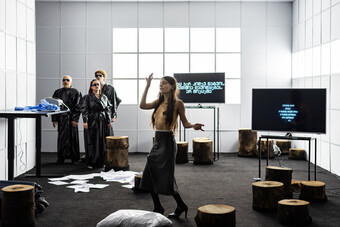Given Ghent’s complexities, it’s no wonder the thematic thrust of the SSBD festival was identity. There is a quote—or half a quote, as Rau reminded me—on NT Ghent’s website from political theorist and philosopher Achille Mbembe: “Identity is not essential because we are all passers-by.” This is not to say that identity is not essential, Rau further clarifies. It is that, for Belgium, “just to focus on one identity is what we learned when we were nationalistic. We want to go forward to something that is bigger than nations.” Or, as academics might put it, overcome methodological nationalism. Goeury agrees: “In the next ten years the artistic scene in Ghent will be so much more culturally diverse than it is now. In a way, SSBD is a prefiguration of that.”
Jaha Koo’s work Cuckoo is a testament to this ambition. A South Korean–European who has been living in Europe for seven years, his festival piece is part of the larger “Hamartia Trilogy,” which, whilst focusing on Korea’s past, is also about “colonialism and how markets are eaten by global corporations.” Cuckoo, an extraordinary critique on neoliberal capitalism, embodies an element of personal storytelling that seems to be a trait of the festival.
Ariah Lester’s White (Ariane) goes even further. It’s a cross between performance art, theatre, cabaret, and music video, and, as he eagerly admits, it’s inspired by Bjork. In the play, Lester tackles identity and the in-betweenness it can provoke head-on. Lester, who is Venezuelan, has encountered prejudices towards his androgynous appearance during performances in Belgium’s rural towns and villages, where he tells me he has felt in danger.
Though Ghent has given the world theatremakers such as Arne Sierens, Miet Warlop, and Ontroerend Goed, it is, like the rest of Belgium, backward when it comes to including people of color in theatre, both as artists and audience members.
What Koo and Lester share in their personal storytelling approach is echoed in Gunst’s production too. Working in opera and musicals for the first time, his piece, in which he performs as an academic giving a lecture, subverts classical expectations and invents a new genre: a lecture/musical/documentary/liturgical experience. Gunst mirrors the sensation of alienation he has felt over the years about his forced cultural assimilation: having lived in Flanders all his life, he has felt the need to suppress his Congolese identity in favor of a more Flemish one. Like Koo and Lester, he explores what Koo terms as “being included in society and yet excluded.” Other shows in the festival—from Nadia Beugré’s Legacy to Moya Michael’s Coloured Swans—aimed to expose work by artists who are less well known for this reason. Goeury explains that some of the work hadn’t even been seen prior to it being programmed—it was commissioned based on the artists’ ambition and content rather than quality.
Targeting audience response and interaction to challenge attitudes was also part of the festival’s mission. Debeuckelaere sites a recent experience she had in an “old-school theatre” in Brussels, where an African family was treated poorly for showing noisy appreciation at a show. “I didn’t like how they were treated,” she says. This learned behavior—where audiences are expected to be reverential and even passive—is reflected in Ghent’s theatre scene. And whilst I did not see any racism, there was a certain sense of inhibited responses. This, as well as how audiences react to otherness they see onstage, has been a challenge for Gunst, Koo, and Lester too.
“I’m still getting accustomed to Flemish audiences,” Lester says. “They are mindful to take more space, more time, to process the show—it is hard to understand whether they are enjoying the performance.” Gunst’s Flandria, because of its experimentation with form, is particularly challenging for audiences. Its very slow tempo, which he tells me is influenced by Congolese rituals, is meditative, but also runs the risk of being alienating and tiring—not least because his work is specifically about his identity and outrage at the appropriation of the Flanders Flag by N-VA (a far right identitarian movement wanting Flanders to separate from Belgium). It highlights the cultural contradictions Gunst also struggles with: a longing for his work to stop being attached to African art and, he says, “to be good enough to stand alone as art pieces.”
Koo also commented on the fact that his work has received more engaged reactions from Greek and Spanish audiences compared to the more muted response from Ghent’s festivalgoers. That said, arts audiences in Ghent have been changing over the last ten to fifteen years—moving from a conservative outlook to something more community-based. Debeuckelaere in particular was cheered by the amount of youth who were in the audiences for SSBD. “When I see young people showing up for these niche events,” she says, “this gives me some positivity.”
All the complex, layered work at the festival caused some ripples on Belgium’s national conscience, highlighting the still-tense relations between the country and the DRC. Some artists from the DRC, such as choreographer Faustin Linyekula and director Michael Disanka, were unable to apply for visas when the DRC closed Schengen House, the body that processes permits. Rau does not believe this was simply an act from the DRC’s side—it could be a case of “local elites from the Congo collaborating with the exploitation of their own people with European elites.” This stalemate—the DRC refusing to permit an exchange of ideas and debate by prohibiting artists from attending—gave the political and social tensions between Belgium and the DRC a human face.
All the complex, layered work at the festival caused some ripples on Belgium’s national conscience, highlighting the still-tense relations between the country and the DRC.
This reality was highlighted at a debate organized to replace and discuss the absence of the barred DRC artists, as well as Belgium’s attitude to modern-day DRC and the difficulties of international artistic cooperation. During the debate, a severed hand, taken in 2004 by De Stoeten Ostendenoare activists from a statue of a Congo slave admiring Leopold II in the Belgian city of Ostend, was suddenly presented by the group to Flemish Minister of Culture Sven Gatz. Piet Wittevrongel, the group’s spokesperson, promised that if the Belgian State and its Royal Family apologized for its colonial past, the hand would be returned. Gatz did not apologize, so the hand has disappeared once more. This debate was not the only event the festival organized around the realities the country is faced with. “Decolonization is a container bin,” curated by BsB, was another example, focusing on whether decolonization has just become a buzzword or if it’s become a lever for a new kind of future.
The festival, while trying to achieve a lot, still has work to do. Most of the leading acts were dominated by African men, which Rau puts down to DRC and Africa’s art scene, on the whole, being male-dominated. Debeuckelaere adds that “in African countries the disparity between male- and female-led companies is larger because of recent history there. But in the communities I travel to, there are women of color artists who have not broken through yet.” Despite this, there are plans for the festival to grow into something more equitable.












Comments
The article is just the start of the conversation—we want to know what you think about this subject, too! HowlRound is a space for knowledge-sharing, and we welcome spirited, thoughtful, and on-topic dialogue. Find our full comments policy here